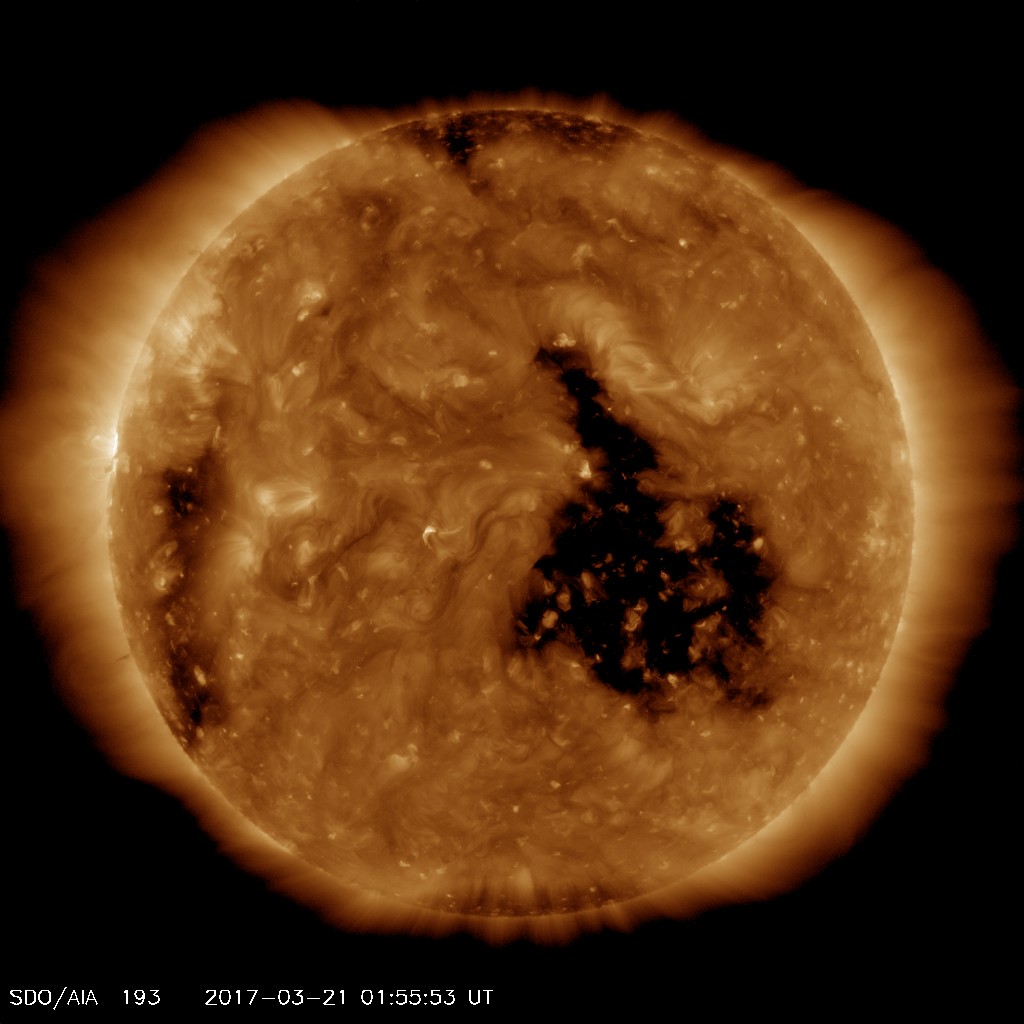March 22, 2017 Auroras
Itasca County, MN
A high speed solar wind stream hit Earth in the early morning hours of the 21st, so there was a chance of this same stream providing conditions for auroras the following evening, too. During the day, the north-south (Bz) component of the magnetic field had been quite variable, but speeds were between 500 and 600 km/s, and it was near the spring equinox, so the chances looked pretty good.
Since Bz was south for an hour or two immediately before sunset, I decided to get out there before it got dark so I could see whatever was unveiled by the the fading twilight. I drove north to Wabana Lake, parked at the boat landing, and walked out with a camera backpack with two cameras and holding two tripods in my hands. After a couple days of cold weather, the ice was solid and slippery on top, and it was beginning to boom and crack quite a bit as the radiational cooling was pretty strong under clear skies. I wanted to try a different part of the lake this time, so I walked out a bit farther from the landing and north along the eastern shore. I found a few nice trees for a foreground and started shooting as dusk turned to nighttime. I pointed one camera north to catch the northern lights and the other to the west to catch the zodiacal light, Milky Way, and the western edge of the northern lights.
Surely enough, once it got dark enough to see stars along the northern horizon, I could see the characteristic glow of the auroral arc emerging. Just about as soon as I was certain that was definitely the northern lights, a small substorm started, and the auroras spread a bit southward, growing higher above the northern horizon. A couple bands formed, and brighter arcs and columns moved around underneath.
 |
| These auroras appeared as soon as it got dark enough to see them. |
Meanwhile, the fading twilight to the west revealed a diffuse band of zodiacal light, which is sunlight scattered by space dust, asteroids, and whatever solid objects might be in the ecliptic plane. The zodiacal light is most visible after sunset in the spring and before sunrise in the fall. The best time to see it is near the equinoxes, so this was about as good a time as any to see it. Additionally, the Milky Way arcs through the northwestern sky just after sunset at this time of year, so it crosses the top of the pillar of zodiacal light. To make the show a little bit better, a more southerly band of auroras appeared in the northwestern sky and allowed me to get a three of these light-emitting features of the night sky in one shot. None of them was particularly dramatic on its own, but it was nice to see them together.
Meanwhile, a meteor lit up one of my shots on my northward-facing camera.
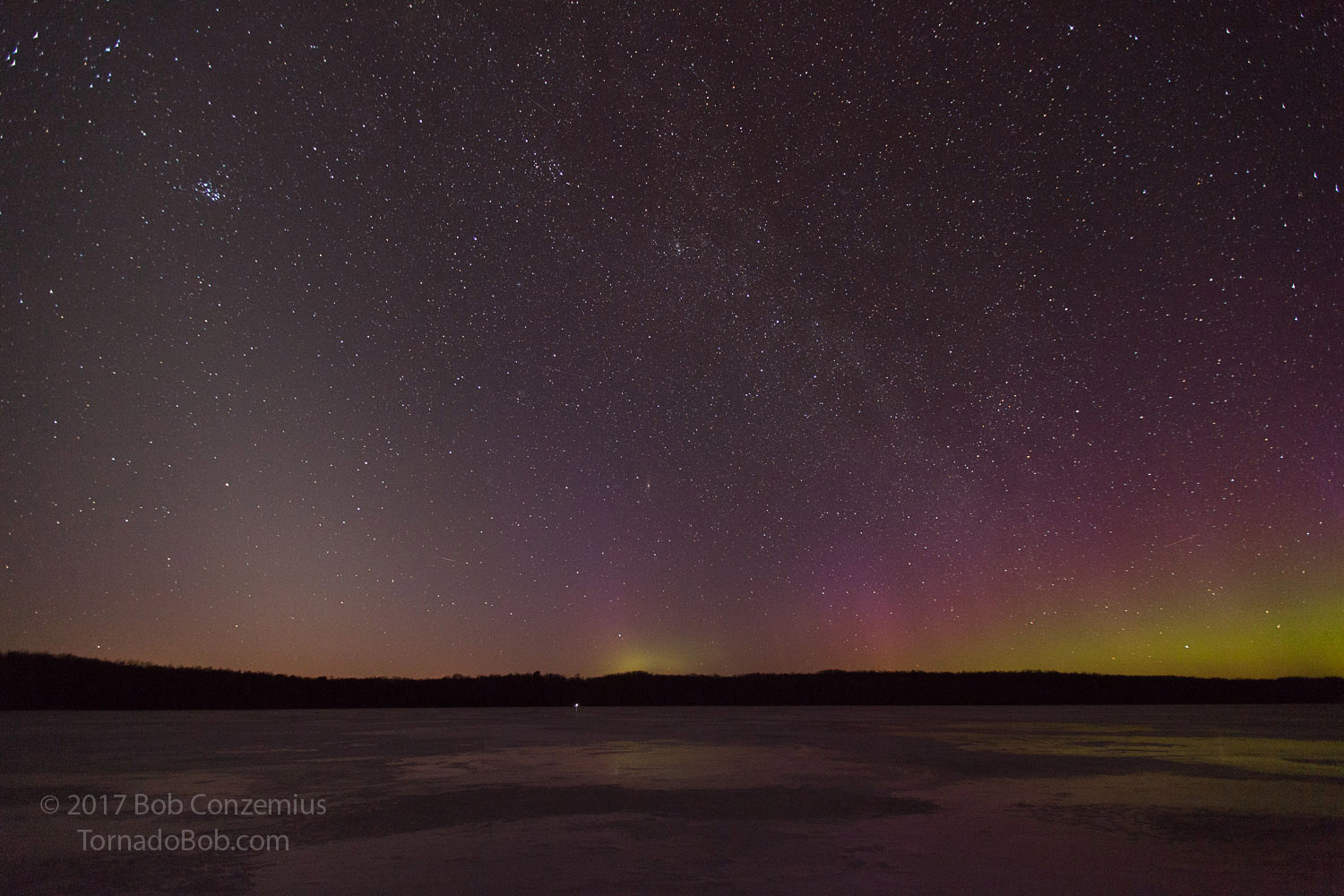 |
| Zodiacal light (left), Milky Way (top and center), and northern lights (bottom right and center). |
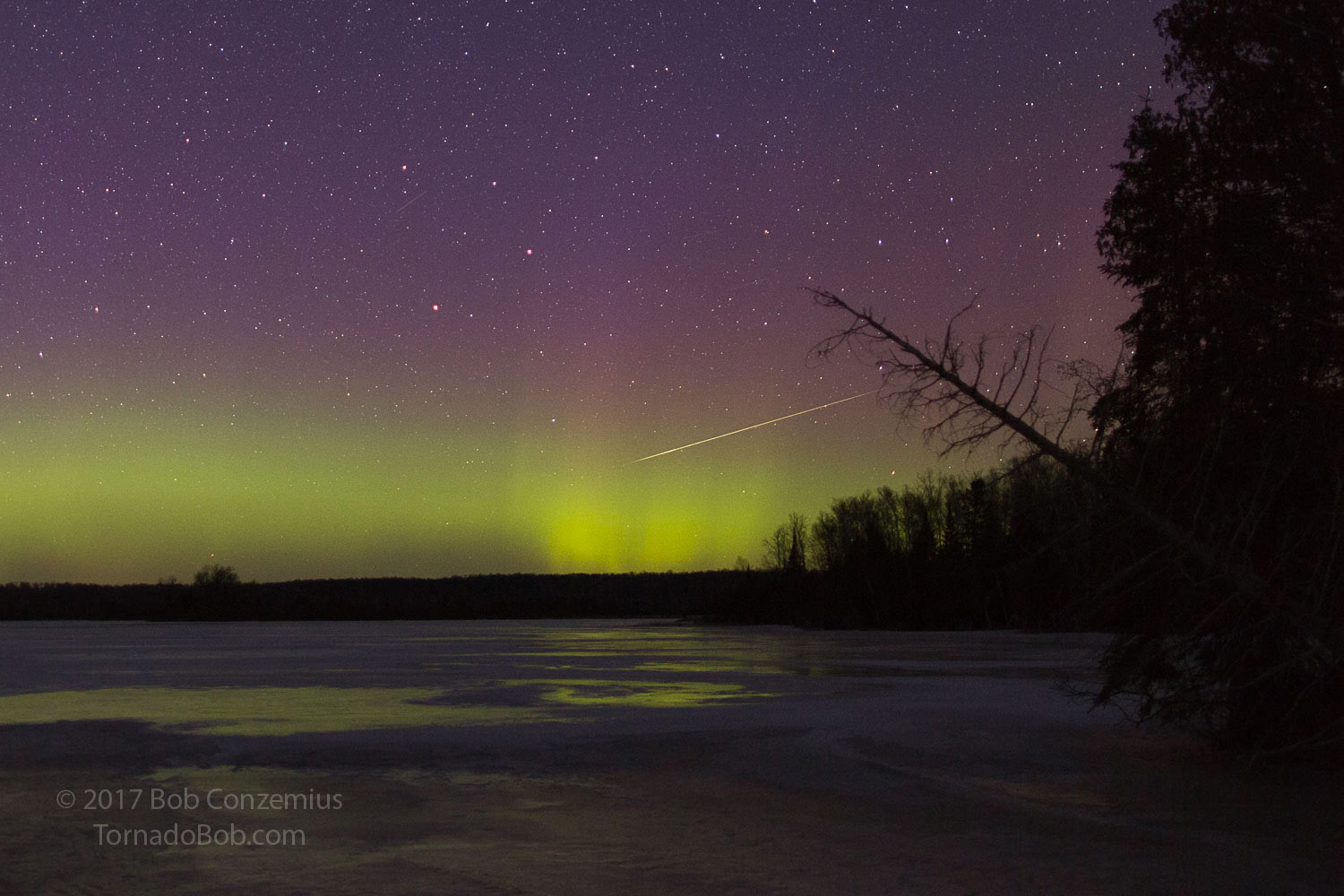 |
| A meteor blazes through the auroras on the northern horizon. |
When astronomical twilight had ended (in other words, it was completely dark as it would get), Bz had gone north, and the northern lights started to fade. I decided I could hang around until it was clear that the northward Bz would extinguish the lights or else Bz again flipped south, which often happens in the high speed solar wind as it generally tends to swing back and forth rather quickly. The visible manifestation of the extinction of the aurora is that the lights retreat to the northern horizon and then gradually fade out completely. It takes at least a couple hours for that to happen, so I waited. During that time, occasional, brighter structures appear, but the overall trend is diminishing brightness.
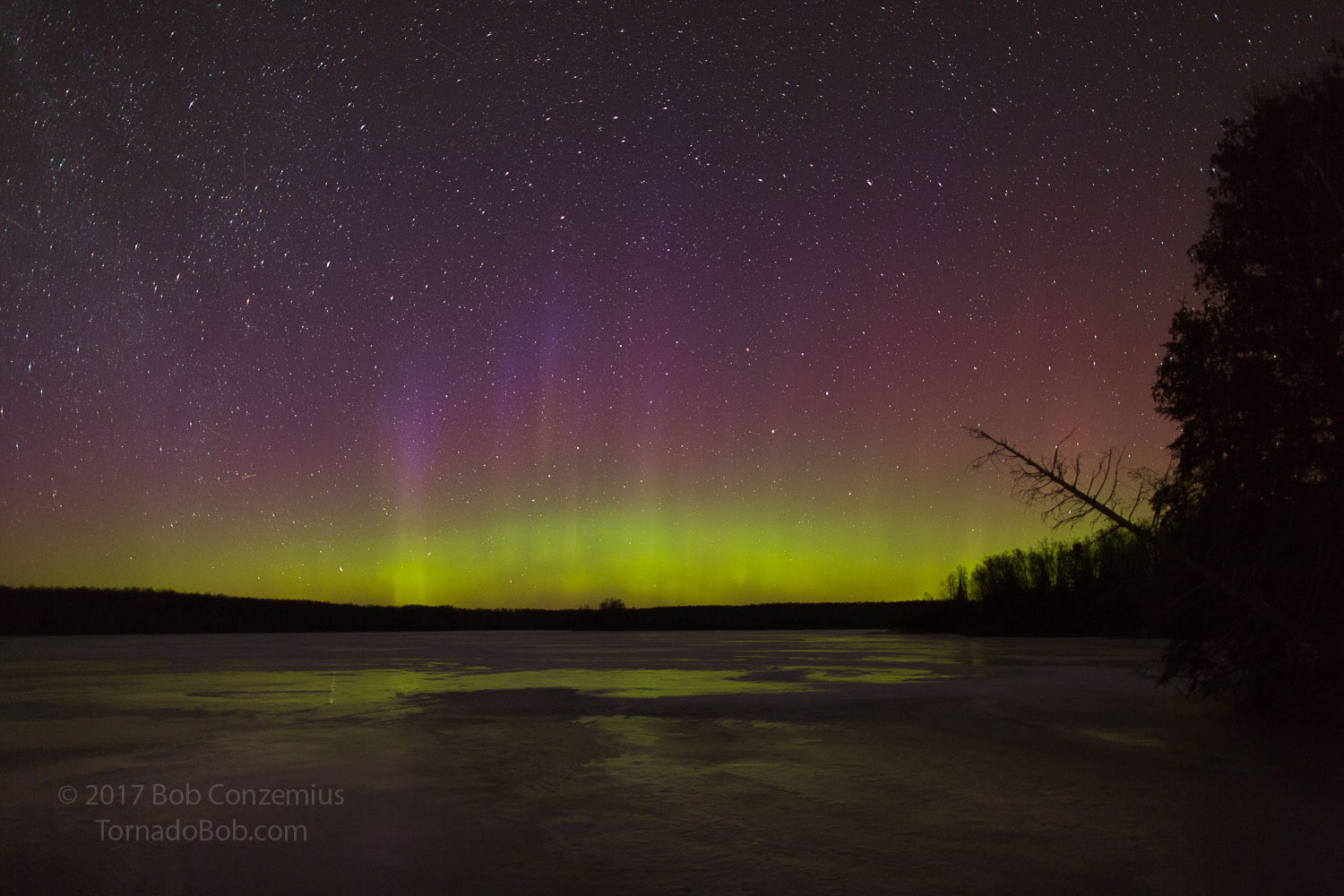 |
| The auroras begin their retreat toward the northern horizon while also showing multiple colors. |
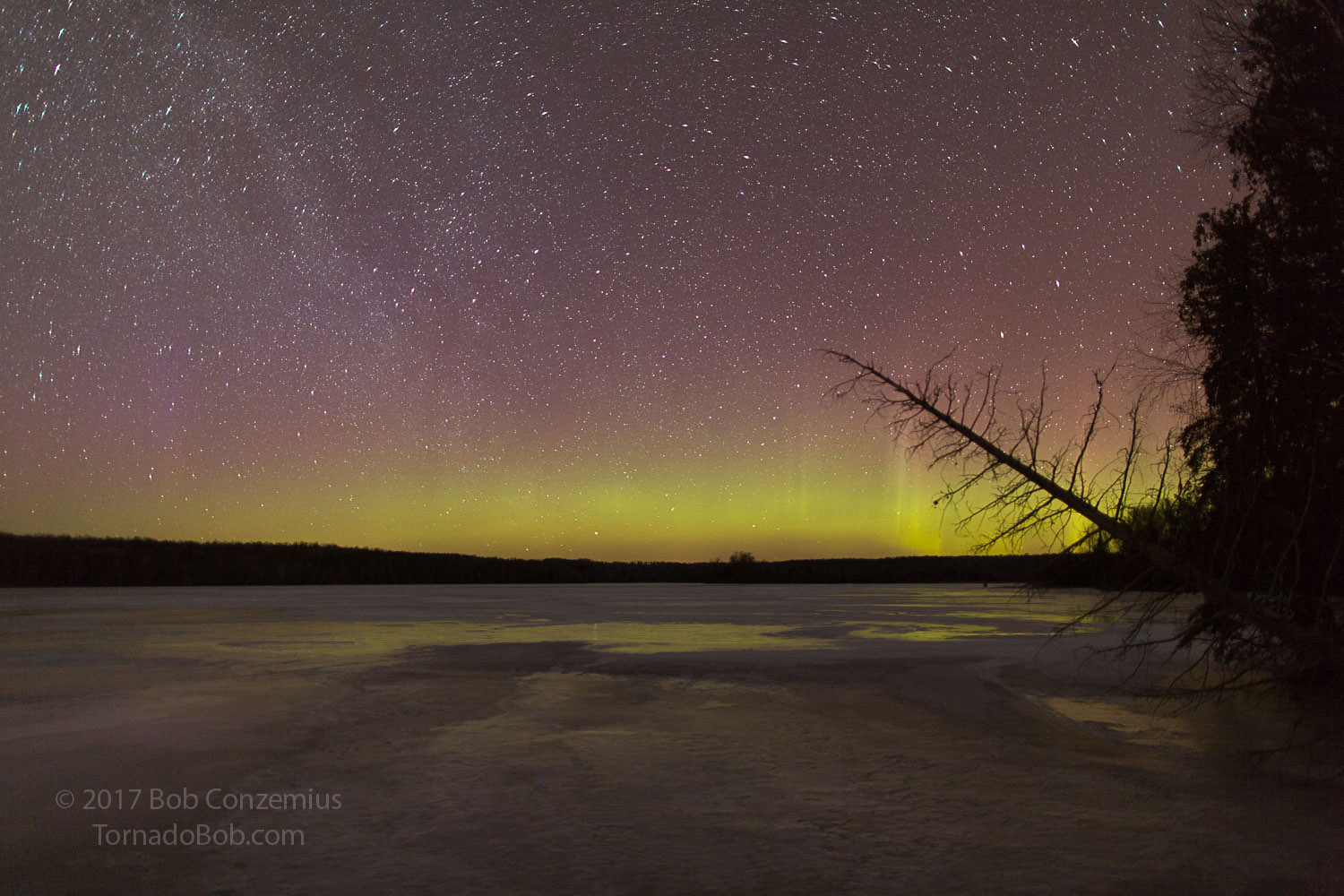 |
| At this point, I'm increasing my exposure times as the auroras get dimmer, and that makes more stars appear in the shot. |
As the auroras dimmed, I increased the exposure time on my camera. That allows the camera to better pick out what auroras are left, and it also allows more stars to be seen in the shot. Overall, I'm trying to fill out the histogram (e.g. have more variation in brightness in the shot). The lights did not fade completely but rather, reformed into an auroral arc that often portends a substorm. Bz had gone south again, and the arc had reversed its direction, beginning a march southward.
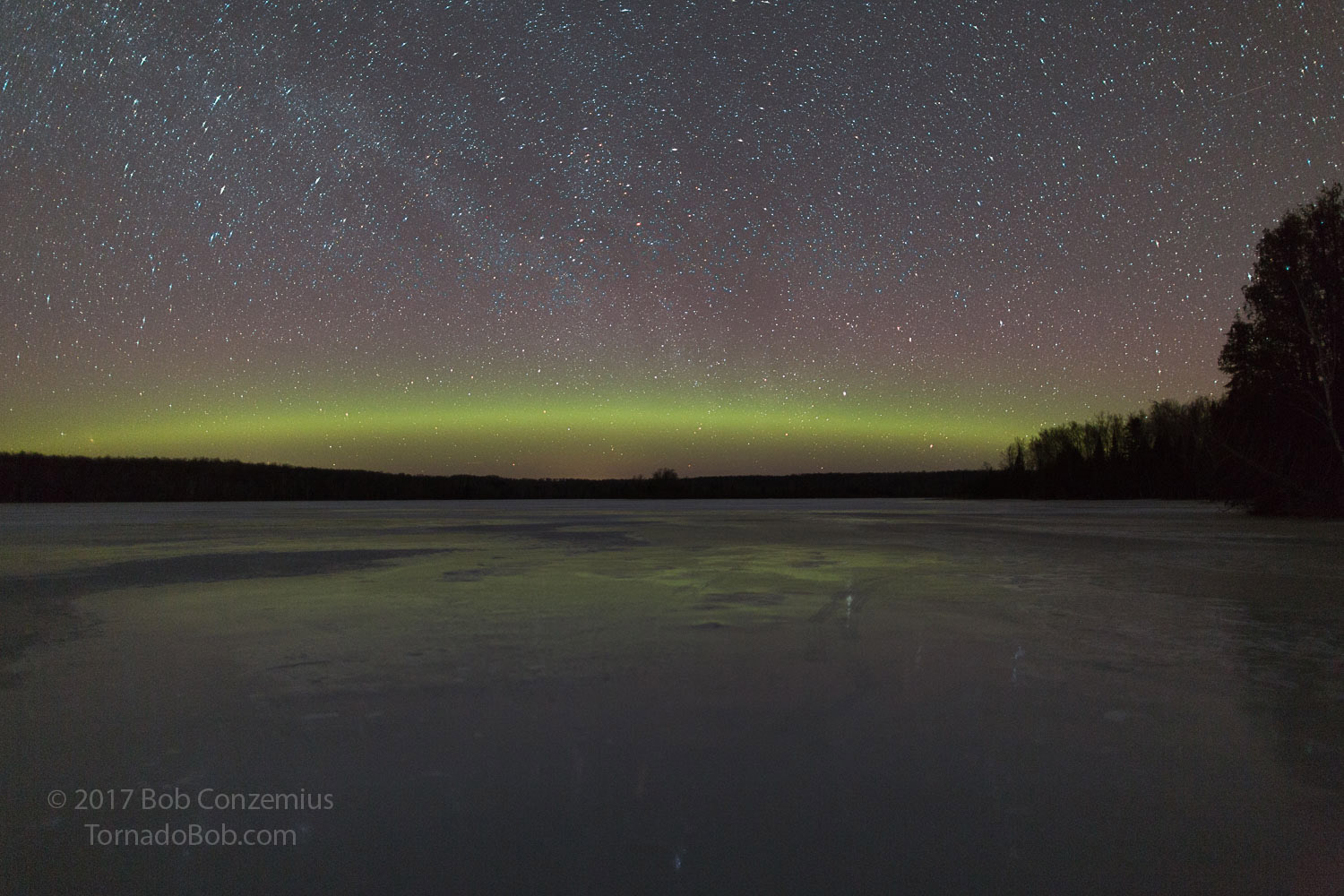 |
| The auroral arc reappears along the northern horizon. |
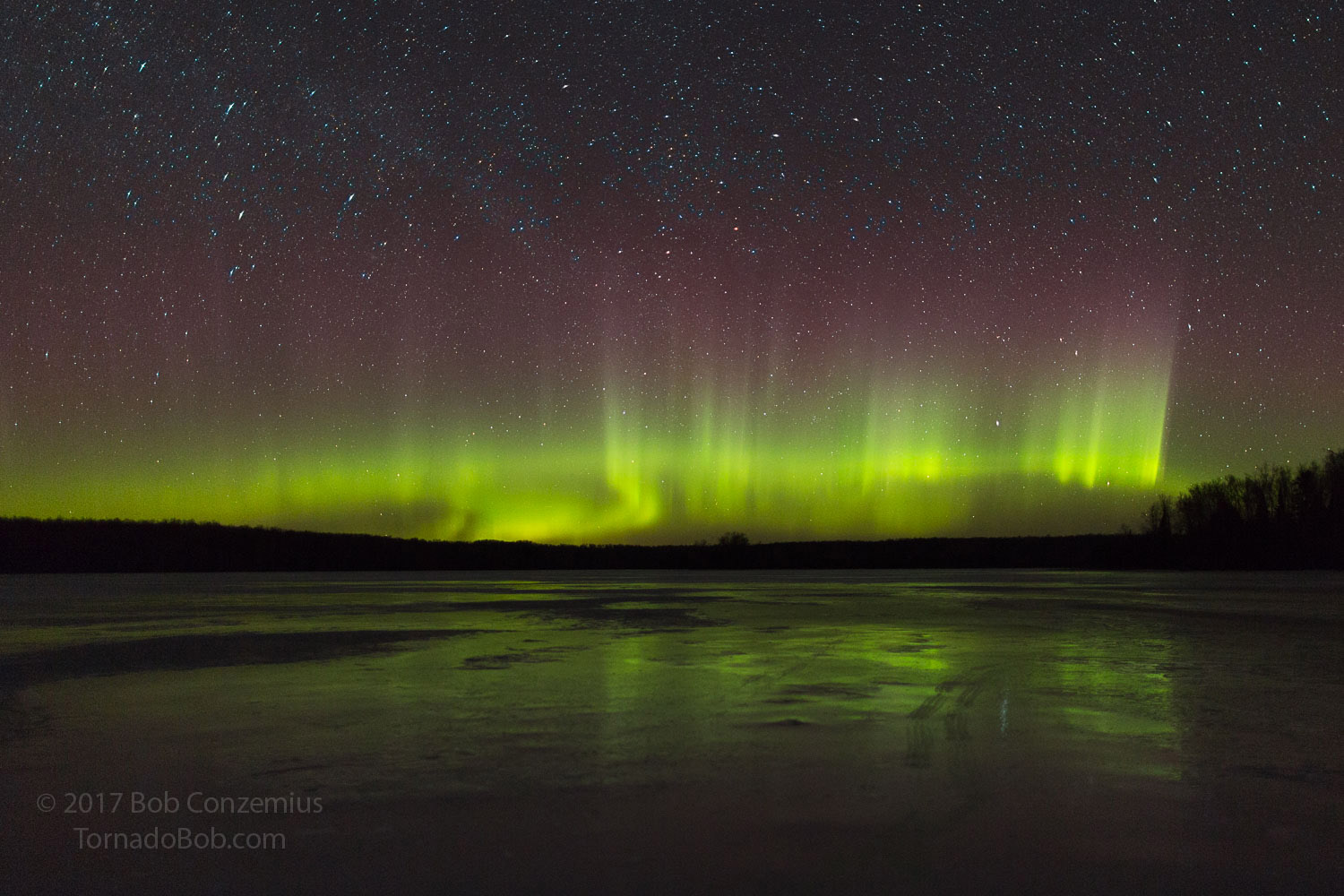 |
| Another substorm begins around midnight. |
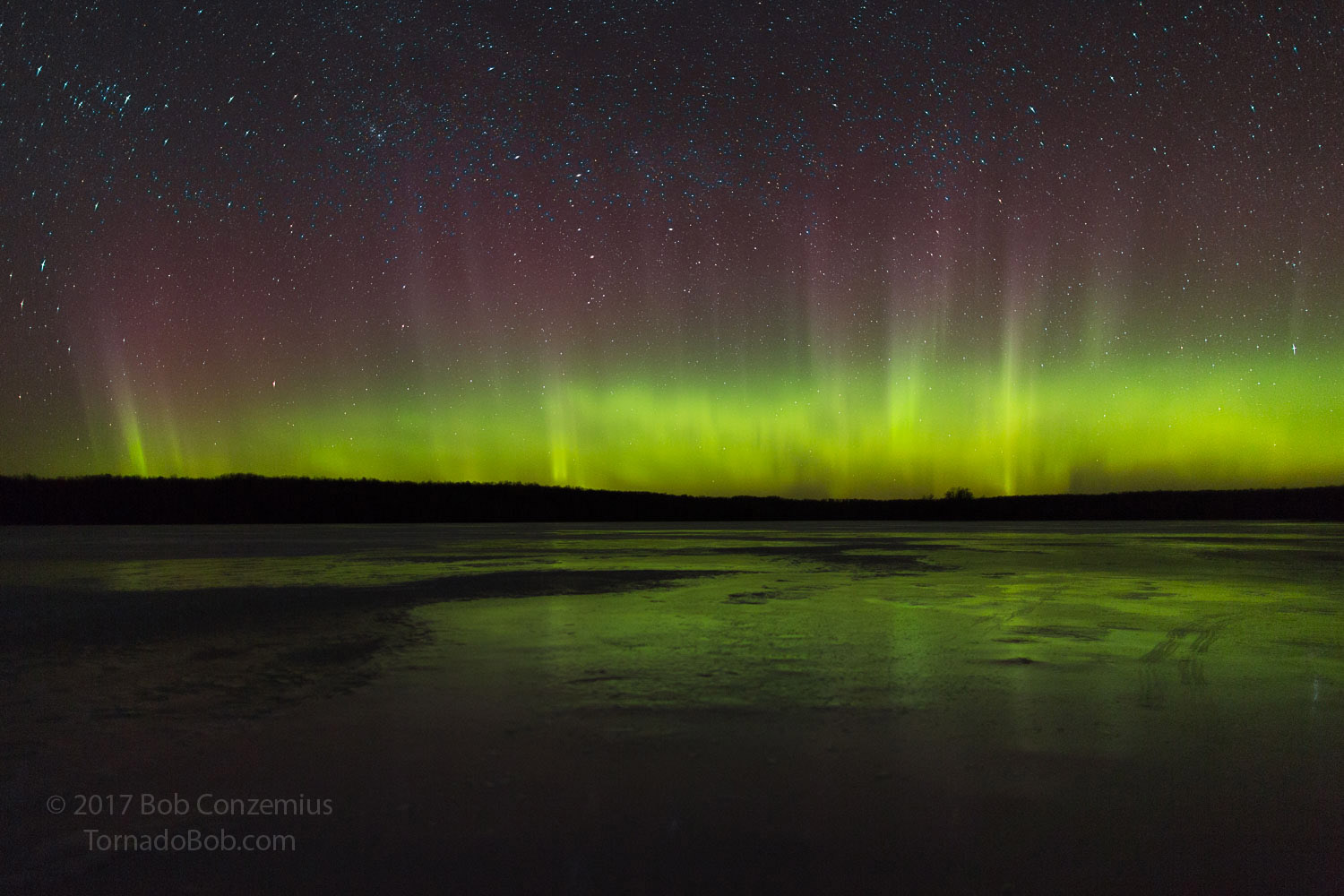 |
| The bright pillars spread across what was earlier the auroral arc. |
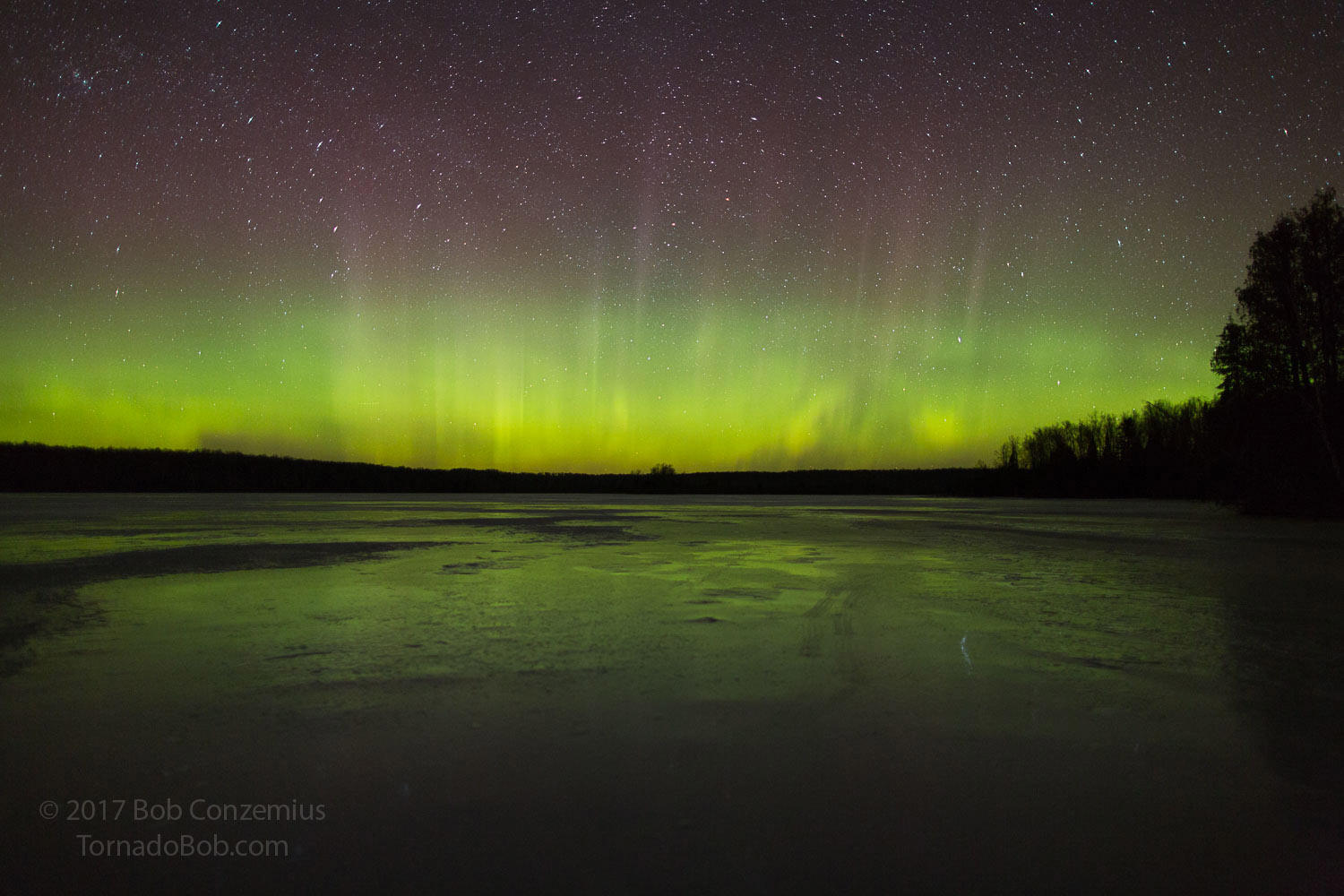 |
| The auroras spread back to the northern horizon. |
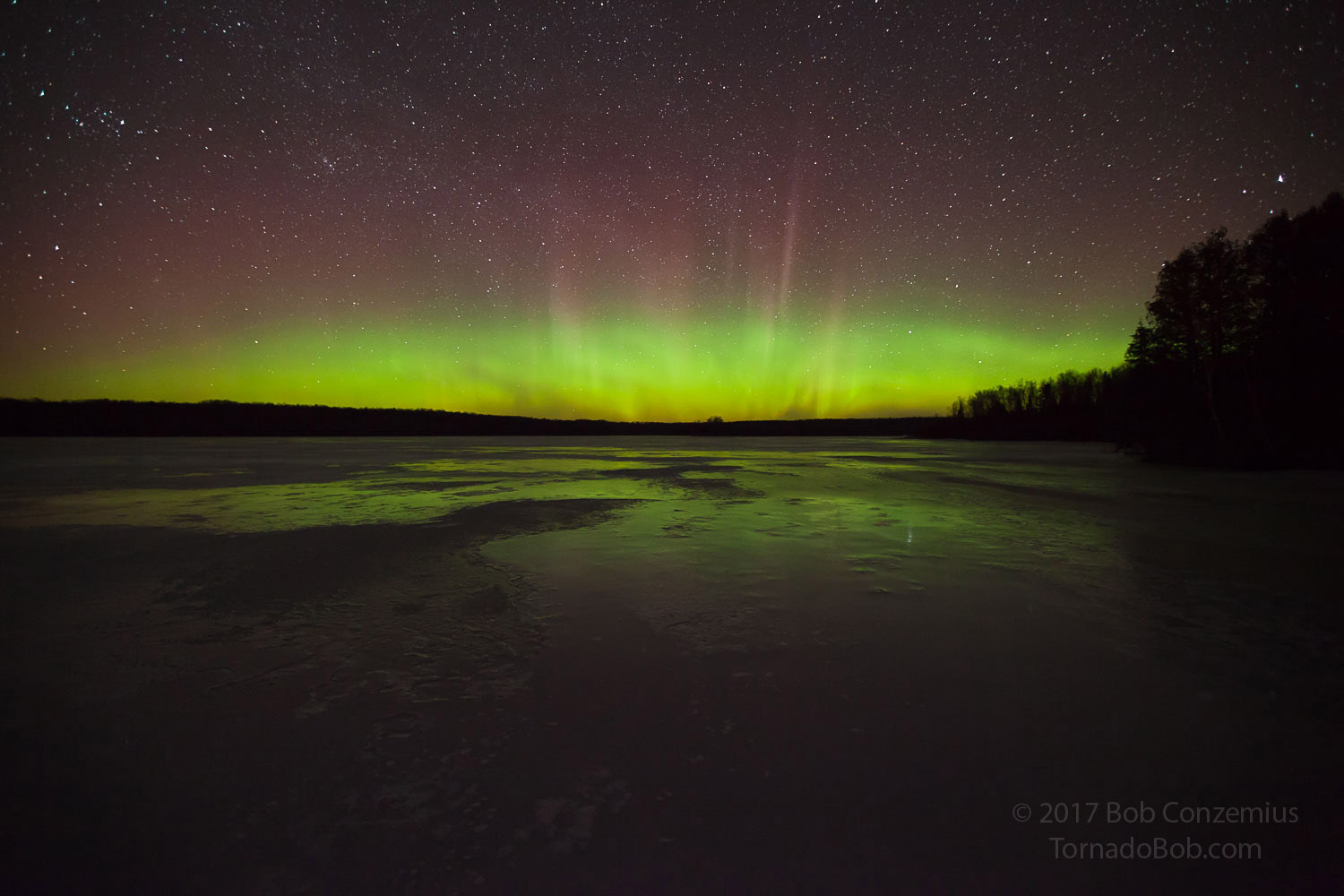 |
| Here's a wider angle shot. |
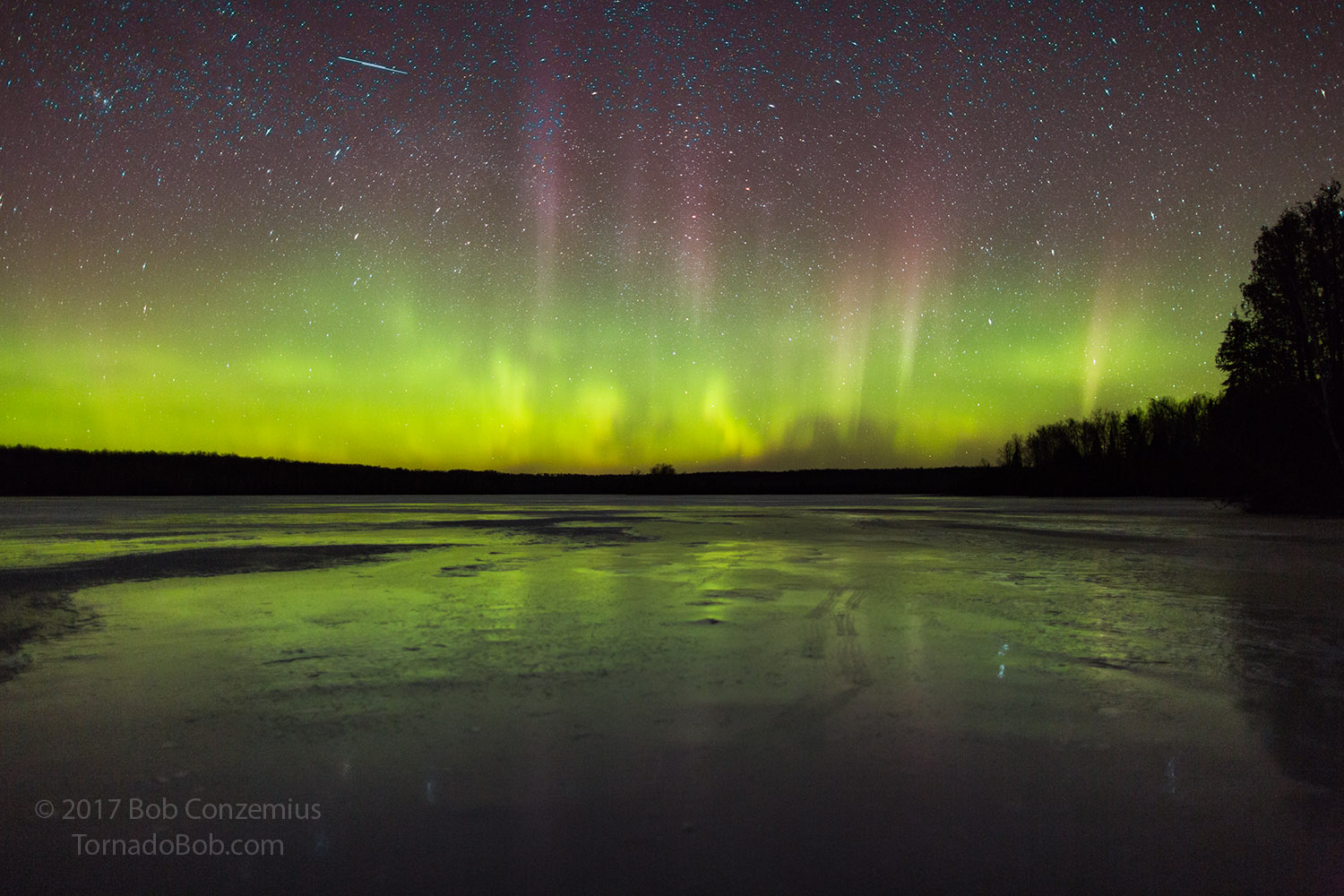 |
| I took some liberty at processing this shot to show what I saw in front of me (except for the color, which I did not see in real time). |
After about 30 minutes, the lights had again faded, Bz had gone north, and I realized it was getting pretty late. I started walking back to the boat landing to get my vehicle and drive home. On my way, I saw a nice foreground and decided to take another image or two.
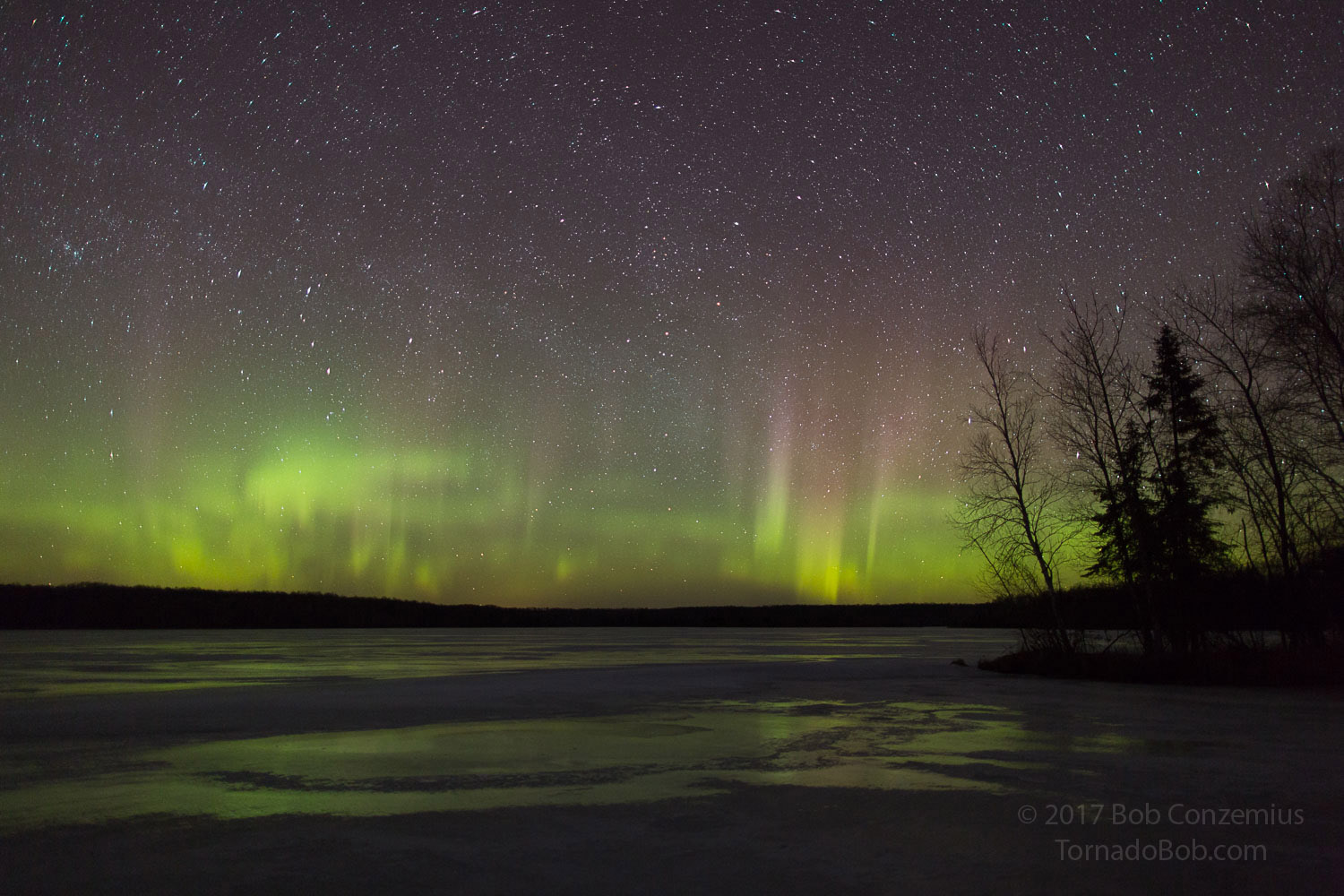 |
| A nice foreground with trees. |
Back to Auroras | Home
